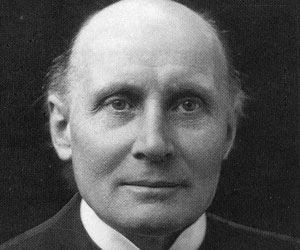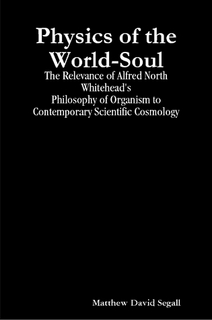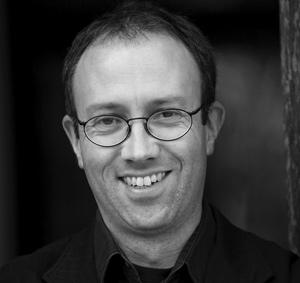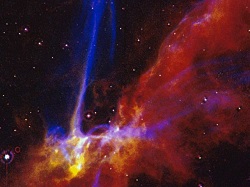|
TRANSLATE THIS ARTICLE
Integral World: Exploring Theories of Everything
An independent forum for a critical discussion of the integral philosophy of Ken Wilber
 Matthew David Segall is a doctoral candidate in philosophy and
religion at the California Institute of Integral Studies in San
Francisco, CA. His dissertation focuses on the historical and
methodological significance of imagination in philosophy,
particularly in the work of Friedrich Schelling and Alfred North
Whitehead. This is a chapter from the self-published book The Relevance of Whitehead’s Philosophy of Organism to Contemporary Scientific Cosmology (Lulu.com, 2013)
Matthew David Segall is a doctoral candidate in philosophy and
religion at the California Institute of Integral Studies in San
Francisco, CA. His dissertation focuses on the historical and
methodological significance of imagination in philosophy,
particularly in the work of Friedrich Schelling and Alfred North
Whitehead. This is a chapter from the self-published book The Relevance of Whitehead’s Philosophy of Organism to Contemporary Scientific Cosmology (Lulu.com, 2013)
The Imaginative Generalization of Evolutionary TheoryMatthew David Segall“In the most literal sense the lapse of time is the renovation of the world with ideas…[The universe is] passing with a slowness, inconceivable in our measures of time, to new creative conditions, amid which the physical world, as we at present know it, will be represented by a ripple barely to be distinguished from non-entity.” -Whitehead[114]  Alfred North Whitehead (1861-1949) The main outlines of the doctrine of evolution, on Whitehead’s reading, must be “[absorbed]…as the guiding methodology of all branches of science.”[115] Grasping the transdisciplinary significance of evolution requires the “negative capability” mentioned earlier, a willingness to consign oneself to the speculative risks Whitehead’s philosophy of organism has proposed for thinking. Because all our knowledge depends upon abstraction, the point is not to avoid it but to do it gently, such that our knowing leaves the concrete life of the world unharmed and intact. Whitehead’s contribution to the philosophical integration of the special sciences and their abstract domains of relevance is derived from what he calls his method of “imaginative generalization.” Metaphysics is the imaginative attempt to express in language the most general features of experience, and therefore, of nature. Every special science devises its own instruments: the instrument of metaphysics, the science of sciences, is language.[116] Like physics, metaphysics should be undertaken as an experimental practice, only the experiments are to be performed on language itself. “The success of the imaginative experiment,” according to Whitehead, “is always to be tested by the applicability of its results beyond the restricted locus from which it originated.”[117] In the case of the connection between evolutionary theory and the new physics, Whitehead’s experiment is to imaginatively generalize Darwin’s specialized concepts of variability, reproduction, and inheritance, such that evolution comes to describe the activity of self-organizing entities at every scale of nature, no longer just the biological. In this sense, as was mentioned earlier, biology becomes the study of the evolution of the larger organisms, while physics becomes the study of the evolution of the smaller organisms.[118] “I am…a thoroughgoing evolutionist,” says Whitehead, …Millions of years ago our earth began to cool off and forms of life began in their simplest aspects. Where did they come from? They must have existed in potentiality in the most minute particles, first of this fiery, and later of this watery and earthy planet.[119] Einstein’s famous equation E=MC2 demonstrates that “mass [is] the name for a quantity of energy considered in relation to some of its dynamic effects”; this leads, according to Whitehead, to the displacement of matter by energy as the most fundamental concept in physics. But what is energy other than the name for the quantitative aspect of a structure of happenings…[a structure] that depends on the notion of the functioning of an organism?[120] That is, if energetic activity is to be understood in its full concreteness, and not just as mathematical functions in an abstract equation, then some reference must also be made to the mental functions of the self-realizing but prehensively interrelated creatures of the actual world (i.e., to purposeful organisms in an ecology). Whitehead explains: Evolution, on the materialistic theory, is reduced to the role of being another word for the description of the changes of the external relations between portions of matter…There is nothing to evolve…There can merely be change, purposeless and unprogressive…[and] there is material [or energy]…which endures. On the organic theory, the only endurances are structures of activity, and the structures are evolved [units of emergent value].[121] After Whitehead’s imaginative generalization, evolution by the reproductive inheritance of variations under selective pressure becomes evolution by the rhythmic propagation, or vibratory reiteration, of actual occasions along historically organized routes, whereby a specific occasion’s conformal physical prehensions of past actualities (=the cause of structural inheritance) become synthesized with its novel conceptual prehensions of future possibilities (=the source of structural variation) into some enduring pattern of experiential value. In other words, There is a rhythm of process whereby creation produces natural pulsation, each pulsation forming a natural unit of historic fact.[122] 
These processes of evolutive concrescence “repeat themselves to the crack of doom in the creative advance from creature to creature.”[123] Whereas in the Darwinian version of the theory, a pre-existent environment of inert material in empty space is considered to be the sole source of selective pressure, in the Whiteheadian version, organisms are understood to be co-creators of their own environments.[124] Also, whereas in the Darwinian theory the competitive struggle for existence is considered the primary engine of evolution, in the Whiteheadian version, cooperative interaction becomes the essential factor for long-term survival. Wherever resilient ecosystems are found, whether at the atomic, biotic, or anthropic level, it is evident that their success is a result of an association of organisms “providing for each other a favorable environment.”[125] Whitehead offers a descriptive example of the evolution of atomic ecologies: Thus just as the members of the same species mutually favor each other, so do members of associated species. We find the rudimentary fact of association in the existence of the two species, electrons and hydrogen nuclei. The simplicity of the dual association, and the apparent absence of competition from other antagonistic species accounts for the massive endurance which we find among them.[126] In the image of the cosmos constructed by the philosophy of organism, evolution comes to refer not only to the process of biological speciation in the earthly mesocosm, but also to wider micro- and macrocosmic ecologies of individualizing energetic activity. Evolution, in its most general outlines, is a theory relevant to the entire scope of cosmic history. Just as Copernicus’ heliocentric theory threw Earth into motion, thereby turning the medieval world upside-down, under the new requirements of the evolutionary theory, the sturdy mechanistic cosmos of modernity has been turned inside-out, revealing an organic cosmogenesis creatively advancing through emergent stages of organization. Cosmogenesis, resting on the infinite potential of literally nothing (i.e., the quantum vacuum), has since its eruption been rushing toward more and more complex forms of realization over the course of billions of years. Cosmic evolution began with the “primordial Flaring Forth,” after which the earliest generation of primate organisms emerged out of the “cosmic fecundity” of the quantum vacuum.[127] In Whitehead’s philosophy of organism, this fecundity finds its place as the ultimate principle of his metaphysical scheme: Creativity. Creativity is “universal throughout actuality,” such that it eternally pervades creation to infect each and every one of its creatures with sparks of potentiality.[128] As the geologian Thomas Berry and the physicist Brian Swimme suggest, Though the originating power gave birth to the universe fifteen billion years ago, this realm of power is not simply located there at that point in time, but is rather a condition of every moment of the universe, past, present, and future.[129] In Whitehead’s scheme, even God is creaturely, and therefore conditioned by the power Creativity. As discussed in the last section, Creativity is also conditioned or concretized in turn by God’s all-embracing valuation of the multiplicity of potentialities, thereby providing each finite organism with erotic lures encouraging the sort of harmonious functioning that has lead to the stages of enduring societal organization characteristic of the universe.[130] Whitehead’s organic primates—or, speaking metaphysically, actual occasions—cannot be understood in isolation; like all biological creatures on Earth, with both their ecological relations in the present and their evolutionary relations in the past, primate organisms are bound together as co-creators in a multiform cosmogenetic community, all of which emerged from one original unfathomably powerful energy-event. “At the base of the serene tropical rainforest,” write Berry and Swimme, sits this cosmic hurricane. At the base of the seaweed’s column of time is the trillion-degree blast that begins everything. All that exists in the universe traces back to this exotic, ungraspable seed event, a microcosmic grain, a reality layered with the power to fling a hundred billion galaxies through vast chasms in a flight that has lasted fifteen billion years. The nature of the universe today and of every being in existence is integrally related to the nature of this primordial Flaring Forth.[131] The primitive beings which first emerged from the Flaring Forth have come since Whitehead’s day to be known by the standard model of particle physics as the muon and tau leptons, along with the charm, strange, top, and bottom quarks, collectively called the fermions.[132] These fundamental organisms have mostly evolved, or decayed, since the Big Bang into the more familiar electrons, protons, and neutrons which make up (as organelles, so to speak) the larger atomic organisms of the periodic table of elements. Left out of this picture are the bosons, or force carriers, like gluons, photons, and the as yet undetected graviton. In Whitehead’s organic terms, bosons and fermions can be described according to the two types of vibration, “vibratory locomotion” and “vibratory organic deformation.”[133] Organic deformation describes the wave-like aspect of primate organisms (i.e., their continuous transition, or duration, of realized pattern, as felt from within), while locomotion describes the particle-like aspect (i.e., their discontinuous epochal realizations, as felt from without).  Caleb Scharf The entire genus of atoms did not appear all at once. Prior to the assistance of the higher-level activity of stars (i.e., the process of stellar nucleosynthesis), no elemental organisms heavier than hydrogen and helium were able to stabilize out of lower-level energetic activities. But before stars could emerge, hydrogen and helium had to collect into huge swirling clouds, which became galaxies.[134] At the center of these early galaxies there emerged black holes (whose gravity was so intense not even light could escape), further securing the next stage of evolutionary complexity. According to astrophysicist Caleb Scharf, the influence of “energy feedback” from these early black holes played a crucial role in forming the stars and planets making up the universe we know today.[135] Star formation was first catalyzed as a result of the rapid revolution of the black holes at the center of galaxies, which generated gravitational density waves that “shocked clouds of hydrogen and helium to condense rapidly into thousands of stars at a time.”[136] Had this rapid process of star formation continued unabated, the raw hydrogen and helium gas of most of the galaxies in the universe would long ago have become far too hot to form any new stars.[137] Fortunately, the energy feedback effects of supermassive black holes has kept star formation in check. In effect, the eating habits of black holes allow them to act as cosmic thermostats, “making sure the porridge of intergalactic matter is not to hot and not too cold.”138 Black holes have played a fundamental role in the evolutionary adventure that gave rise to our present cosmic ecology.[139] According to Scharf, The fact that there are any galaxies like the Milky Way in the universe at this cosmic time is intimately linked with the opposing processes of gravitational agglomeration of matter and the disruptive energy blasting from matter-swallowing black holes. Too much black hole activity and there would be little new star formation, and the production of heavy elements would cease. Too little black hole activity, and environments might be overly full of young and exploding stars—or too little stirred up to produce anything.[140] Galaxies and black holes can be understood as analogous to massive cellular systems, where the regulative role of the black hole is akin to that of the central nucleus of a cell. Like all other organisms, galaxies appear to have a finite life-span, beyond which they can no longer produce new stars. The nested feedback loops at work to secure the self-organizing dynamics of a biological cell are obviously far more complex and adaptive than the simpler feedback exhibited by black holes; but nonetheless, the general analogy seems to hold. Footnotes114 Whitehead, Religion in the Making (Edinburg: Cambridge University Press, 1926/2011), 100, 144. 115 Whitehead, Science and the Modern World, 101. 116 Whitehead, Process and Reality, 11. 117 Whitehead, Process and Reality, 5. 118 Whitehead, Science and the Modern World, 97. 119 Price, Dialogues of Alfred North Whitehead, 277. 120 Whitehead, Science and the Modern World, 96. 121 Whitehead, Science and the Modern World, 101. 122 Whitehead, Modes of Thought, 88. 123 Whitehead, Process and Reality, 228. 124 Whitehead, Science and the Modern World, 105. 125 Whitehead, Science and the Modern World, 104. 126 Whitehead, Science and the Modern World, 104-105. 127 Thomas Berry and Brian Swimme, The Universe Story: From the Primordial Flaring Forth to the Ecozoic Era, A Celebration of the Unfolding of the Cosmos (San Francisco: Harper, 1992/1994), 21. 128 Whitehead, Process and Reality, 164. 129 Berry and Swimme, The Universe Story, 17. 130 Whitehead, Process and Reality, 244. 131 Berry and Swimme, The Universe Story, 21. 132 Lederman, The God Particle, 62. 133 Whitehead, Science and the Modern World, 121-125. 134 Berry and Swimme, The Universe Story, 34. 135 Caleb Scharf, Gravity’s Engines: How Bubble Blowing Black Holes Rule Galaxies, Stars, and Life in the Cosmos (New York: Scientific American, 2012), 210. 136 Berry and Swimme, The Universe Story, 34. 137 Scharf, Gravity’s Engines, 202. 138 Scharf, Gravity’s Engines, 143. 139 Scharf, Gravity’s Engines, 164. 140 Schwarf, Gravity’s Engines, 204.
|
